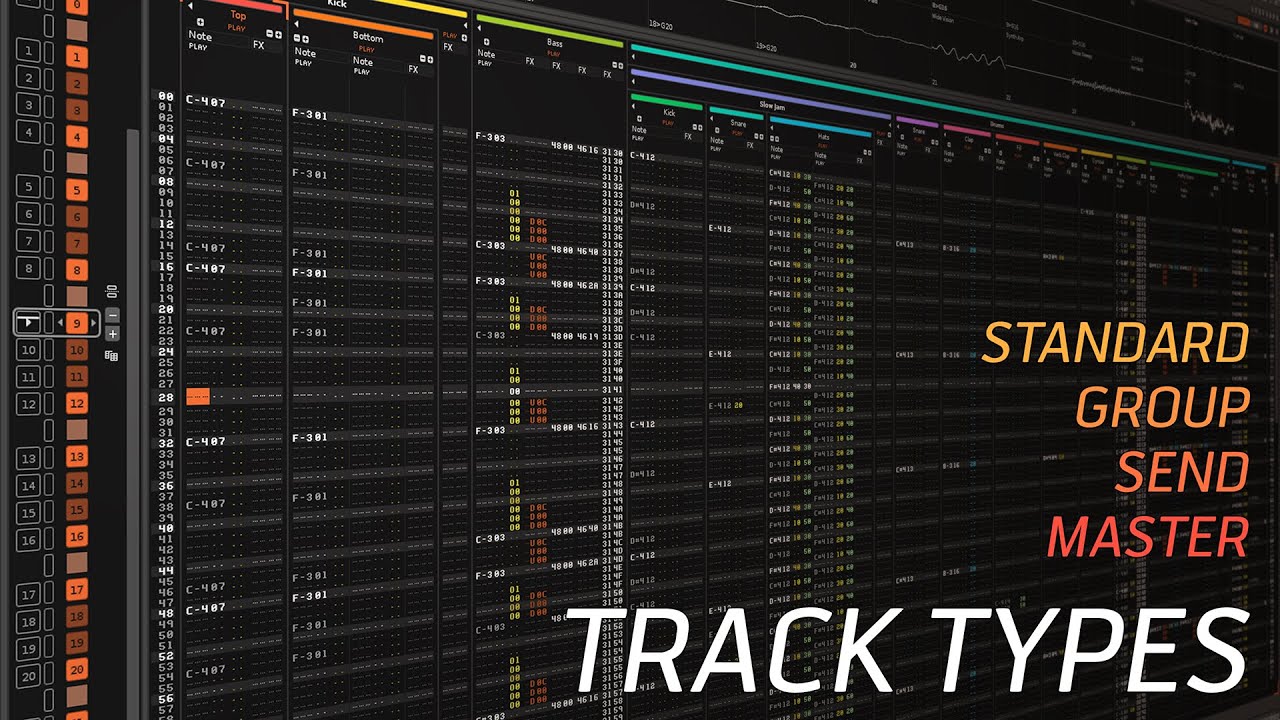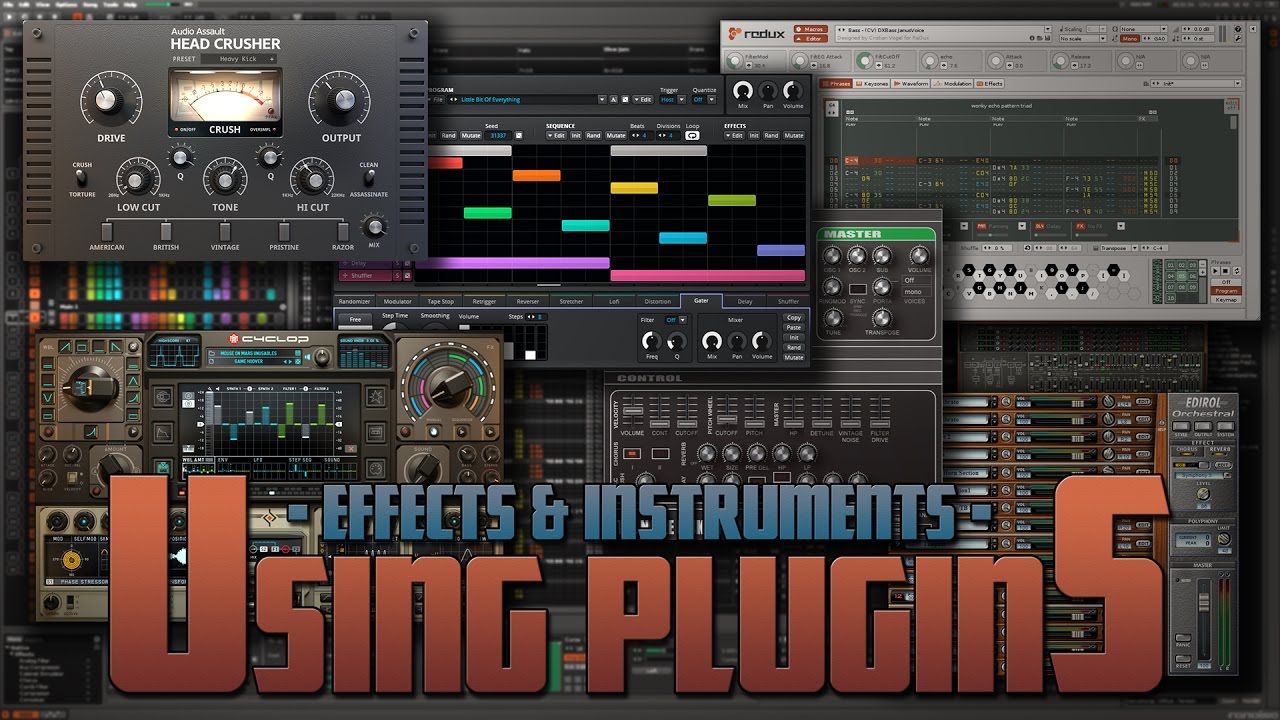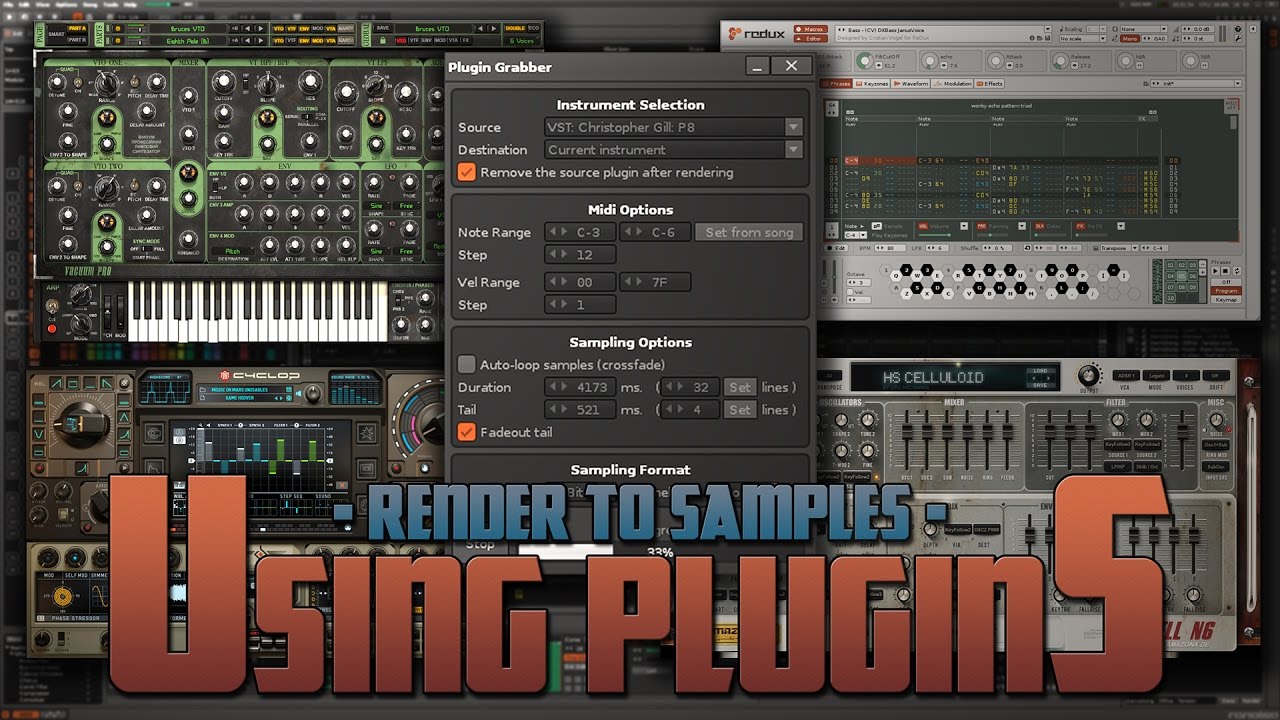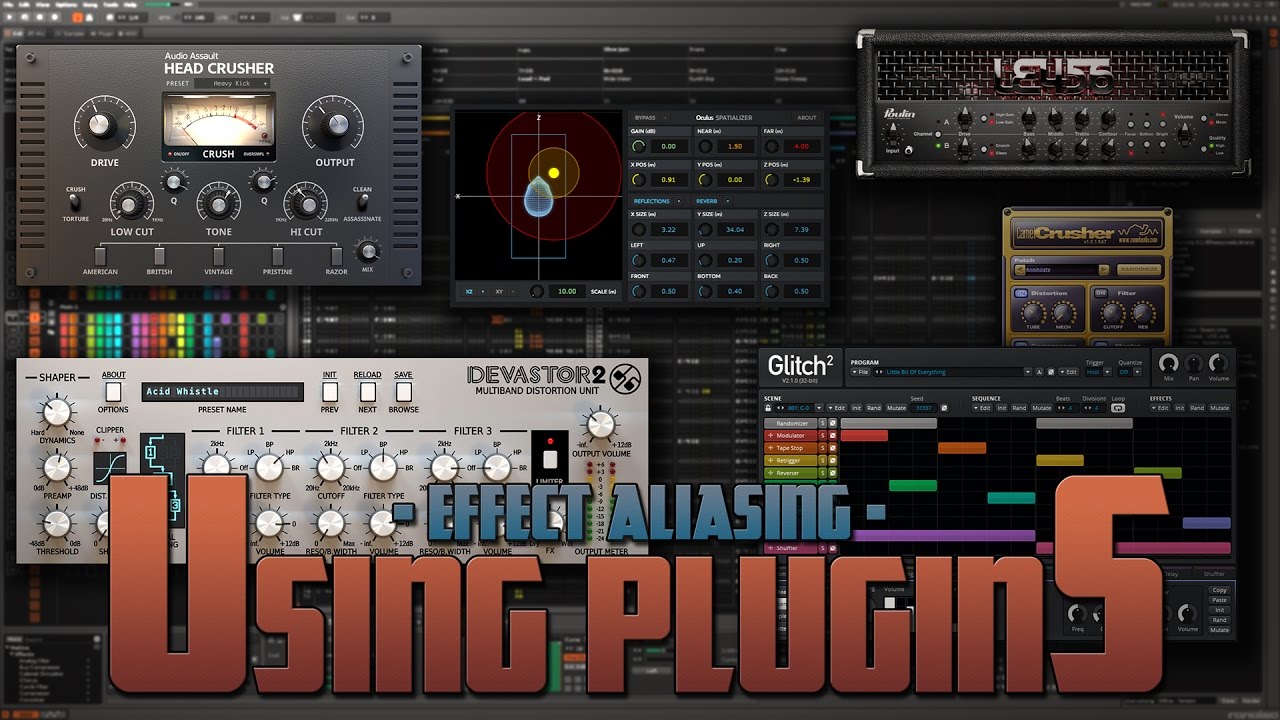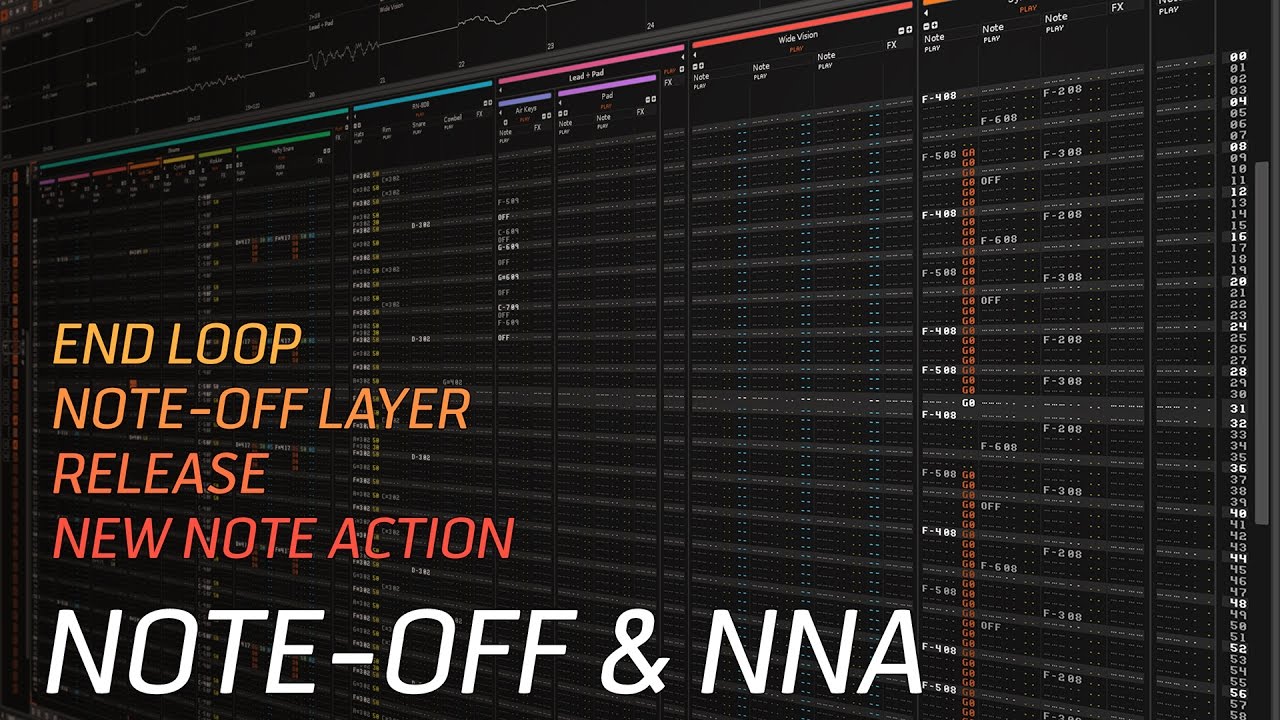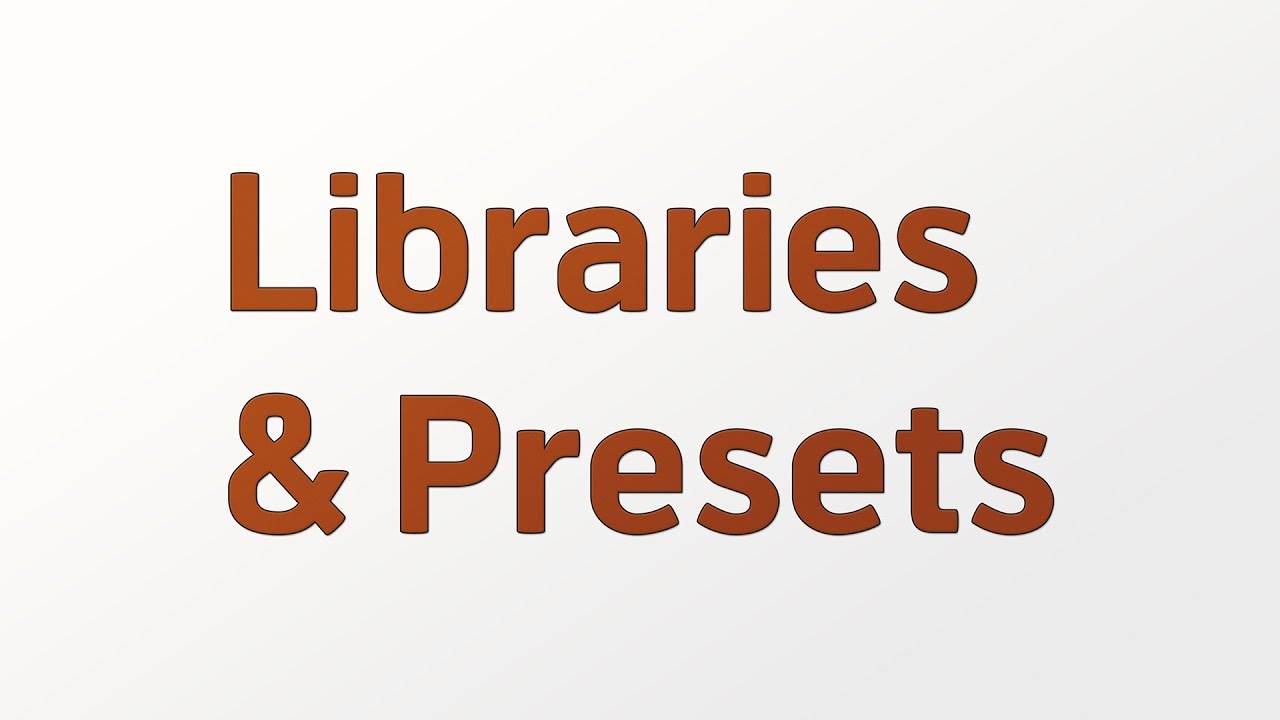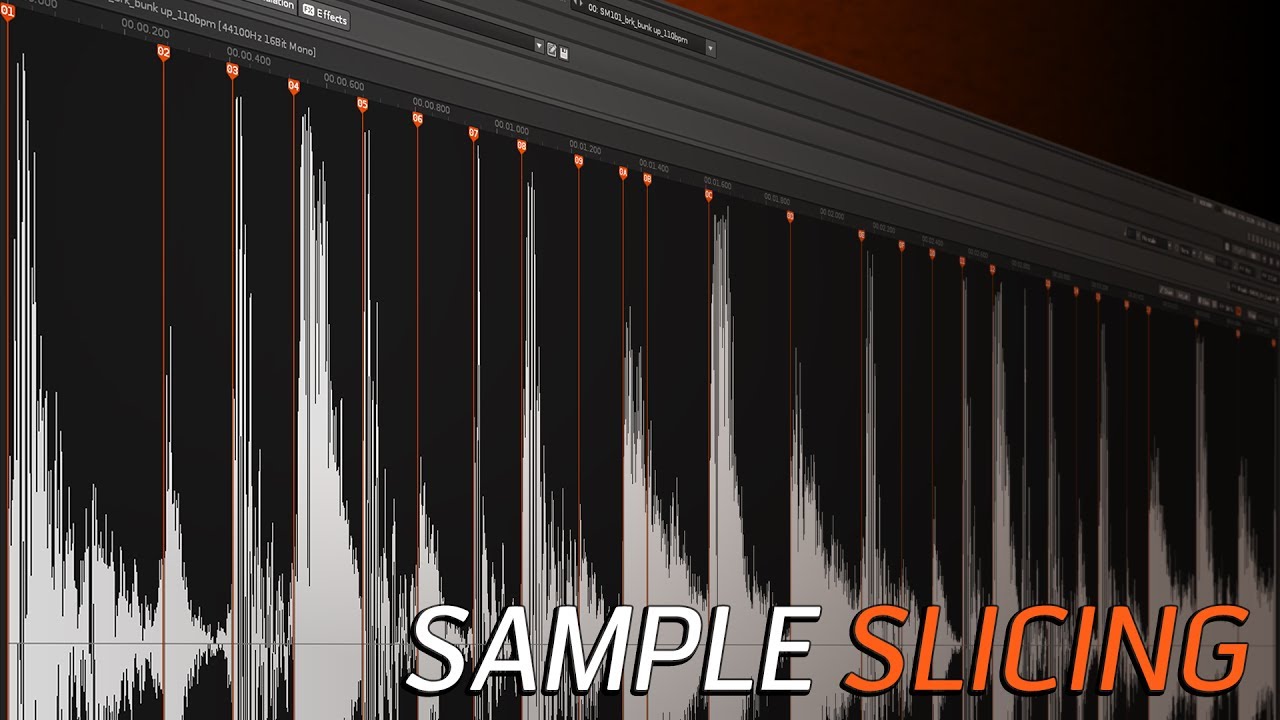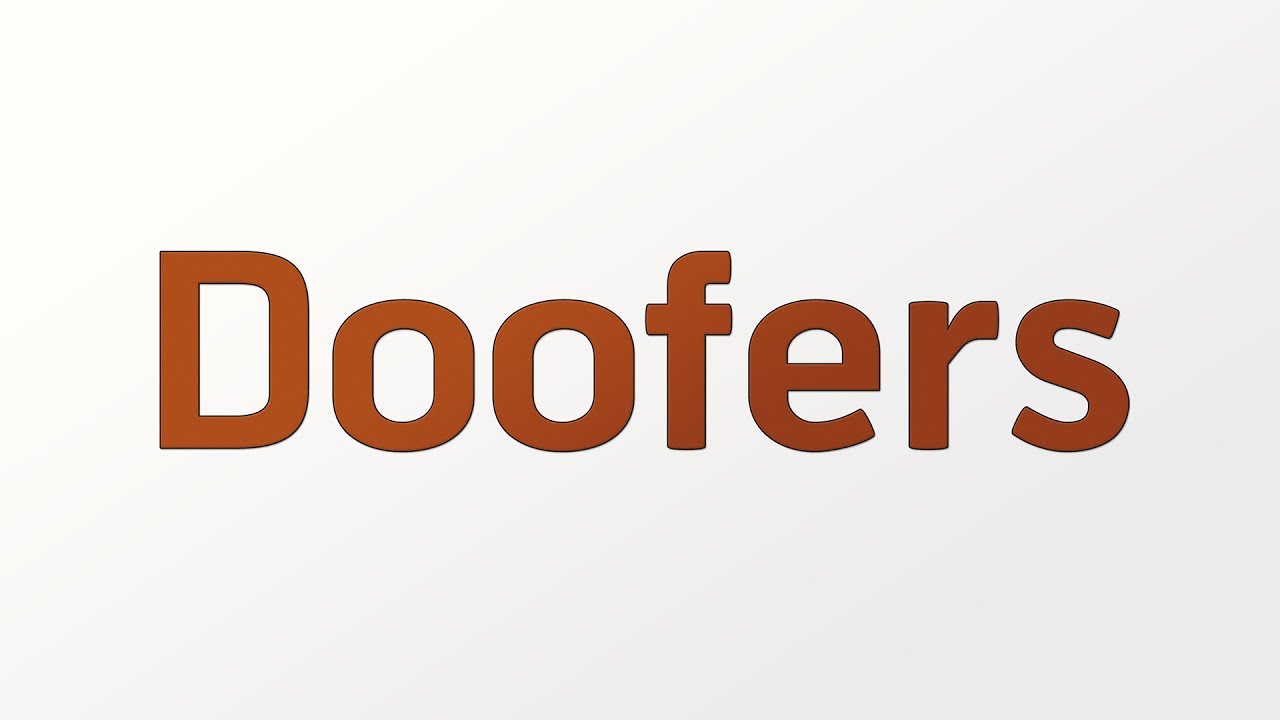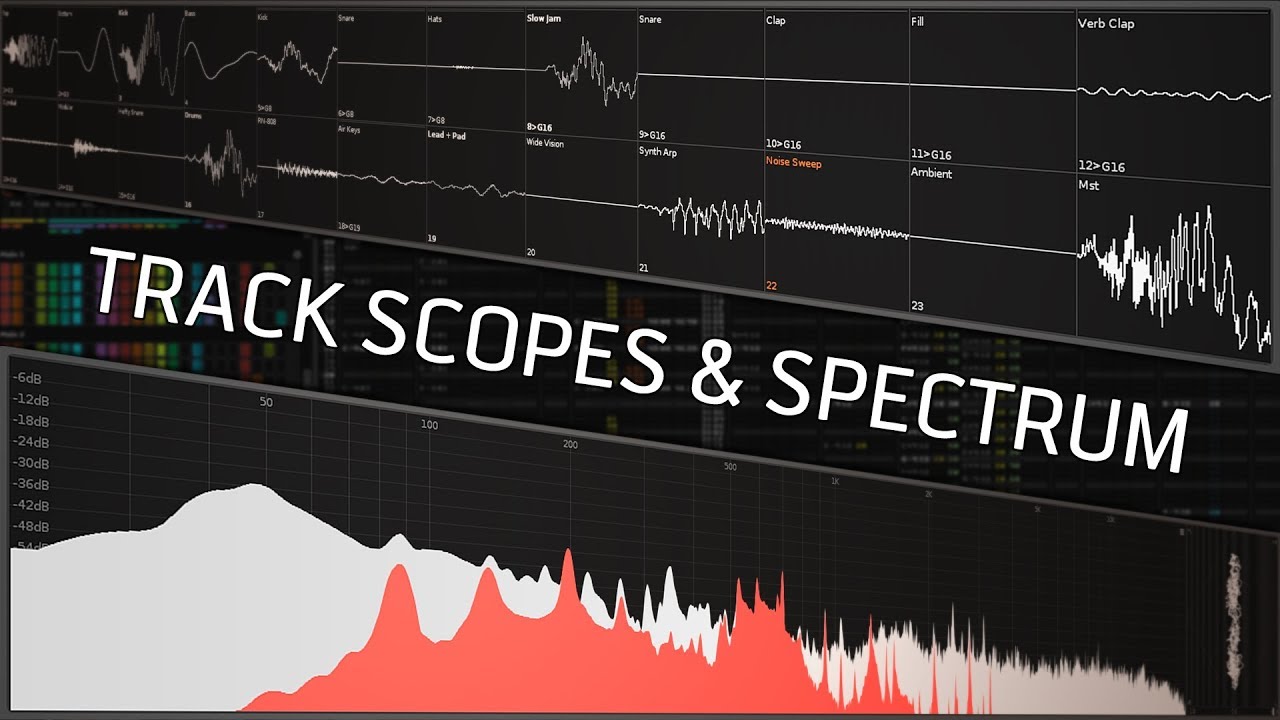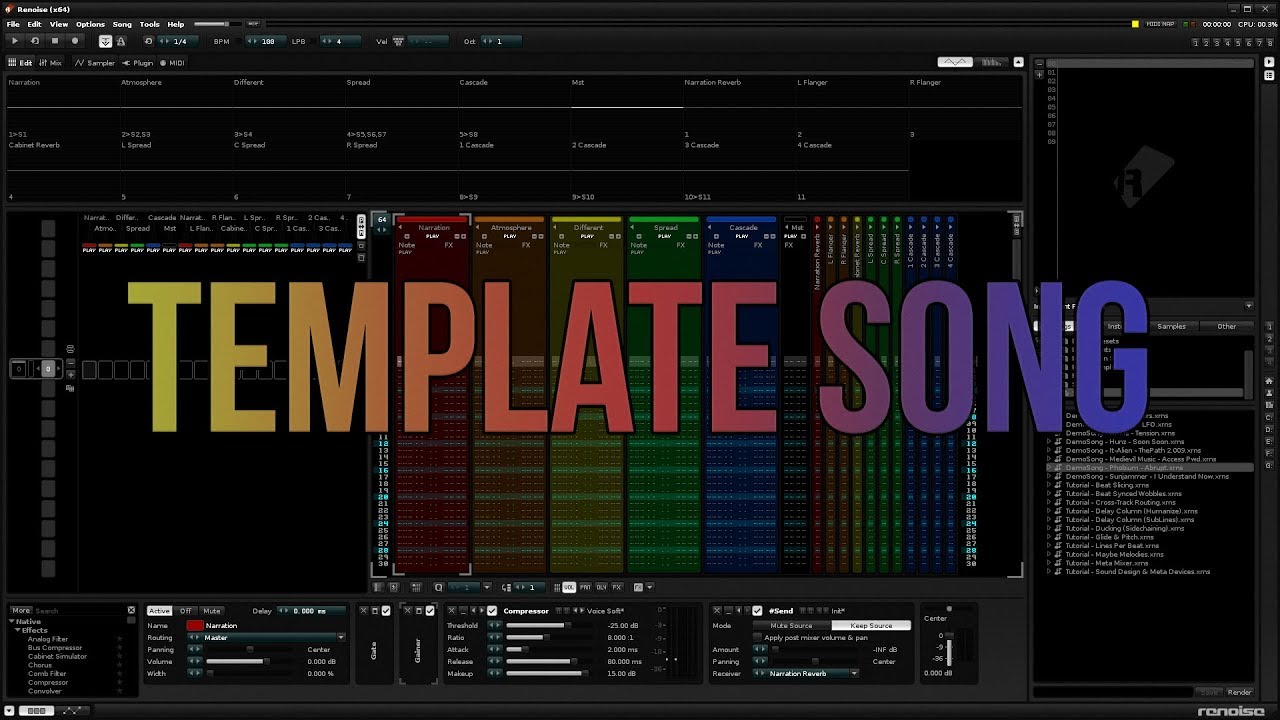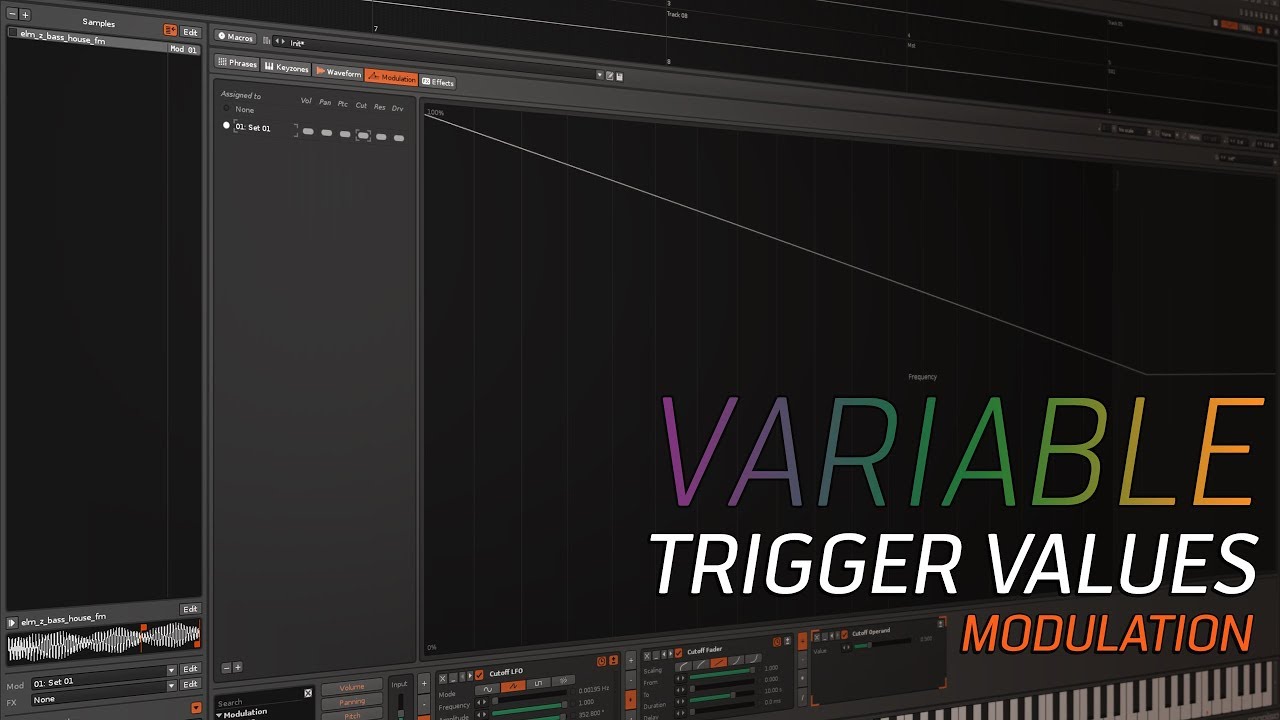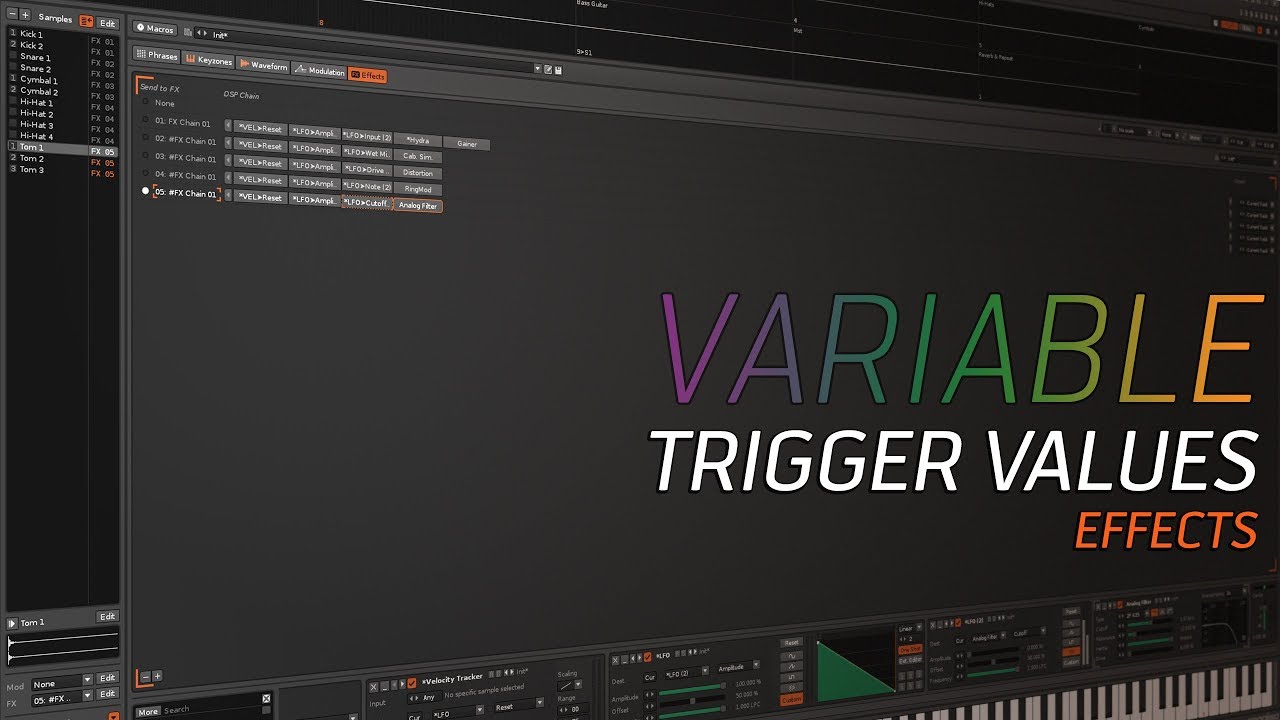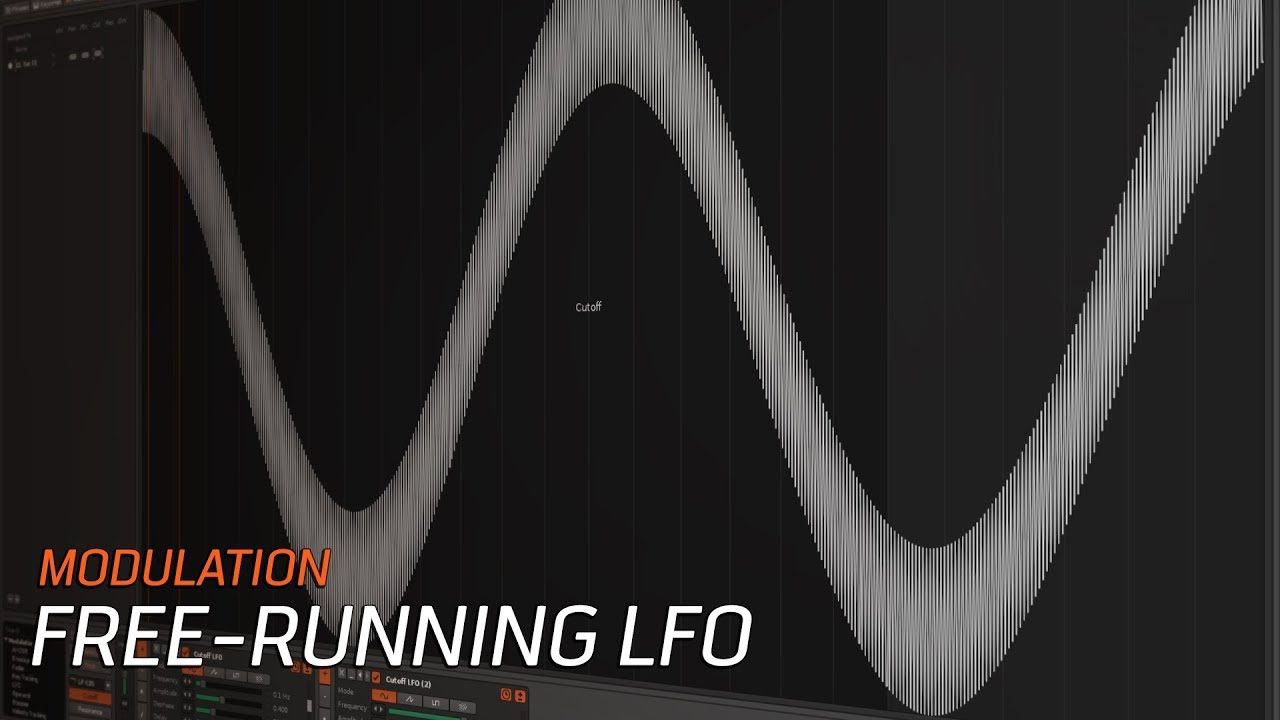Looking at the Standard, Group, Send & Master track types, followed by the various options for organising them.
We take a look at using external, third-party plugins, which come in the file-types of VST, Audio Units, LADSPA and DSSI.
We take a look at using external, third-party plugins, which come in the file-types of VST, Audio Units, LADSPA and DSSI.
Achenar, thank you very much for this video!
The Plugin Grabber allows you to create sample-based instruments from any plugin. The plugin is rendered and the resulting samples are automatically used to build a Renoise instrument according to your settings.
It’s normally impossible to change a plugin effect’s preset/program or send it note data. Through the use of effect aliasing though, these things are possible.
Automation allows us to change the parameters of an effect over time as the song is playing. Renoise offers two methods of doing this.
Download the song to use for this video:http://forum.renoise.com/index.php/files/getdownload/1464-track-ef
Great vids but i seem to be lacking…
I dont quite have the same instruments as you have in these vids, also in this vid you apply a filter (HP) to the bass pattern - i do not have a filter in the effects even tho i am running a fully paid and up to date version of renoise.
Have i messed something up or have i just missed something???
It seems to be recorded with renoise 3.0, not the current 3.1
But basically everything works just the same. You could download 3.0 from the archive to get the missing instruments from the library.
Also you can reenable the old filters/effects via a tool https://forum.renoise.com/t/new-tool-3-0-insert-hidden-legacy-renoise-dsp-effect/43441 or there is also some thread to make it manually. You could as well use one of the more modern highpass filters in 3.1, from the new the analog/digital filter device
During a song’s playback, triggered notes can be cut short by the Note-Off command. For samples this can trigger any or all of these three things: End Loop, Note-Off Layer and Modulation Release.
A Library acts as a container for other Presets, stored in the file format .xrnl, which is easily installed via drag and drop. Once installed, the Library’s contents will be available to use through the Preset menus.
Create your own Library: http://tutorials.renoise.com/wiki/Libraries#XRNL_Library_Creation
By placing markers onto a sample it can be sliced up. Those slices can then be used as if they were individual samples themselves. This process is non-destructive because the original sample is left untouched.
Doofers enable the bundling of complex effect chains within a single device and provide easy access to the most useful parameters through macros. Automating a macro will change the values of all assigned parameters.
The Track Scopes and Spectrum panel allows you to examine audio signals in real-time by providing two different visual representations of your song.
Probably have done it by accident, but somehow never caught on to that mousewheel scrolling in the scopes will tab the cursor through tracks, nice!
A Template Song is a special song file used as the initial document when Renoise is launched or when creating a new song.
The instrument modulation introduced in Renoise 3 allows you to alter various aspects of the sound as it’s being produced. This happens polyphonically, so you can use the available devices to generate a different result every time a note is played.
With modulation it’s easy to add variety to the samples of an instrument each time they’re triggered. But what if you want to achieve this using effects?
Great stuff! -subscribing to thread
In a Renoise instrument Modulation is applied polyphonically while Effects are not, but what exactly does this mean?
.
